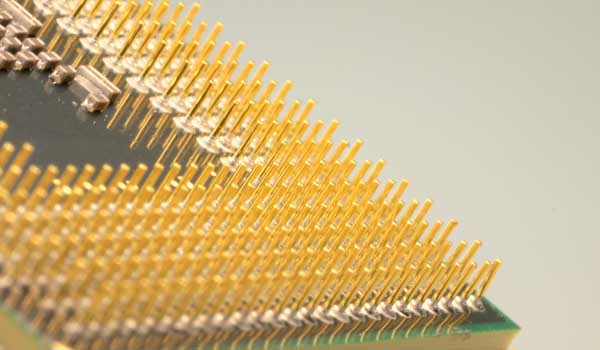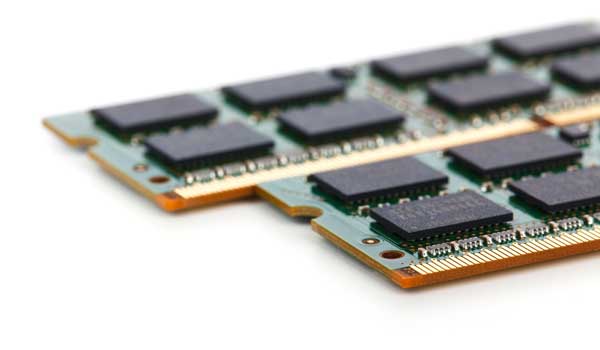Whether you’re a networking student practicing with virtual machines or trying to find out any vulnerability in your security system, perhaps you might need to use software that runs on a specific OS, or you’re developing any application that runs on Windows, macOS, or Linux.
Top Rated Budget Laptops
Last update on 2025-06-28 / Affiliate links / Images from Amazon Product Advertising API
It doesn’t matter what your purpose is; one of the most popular virtualization software, VMware, can fulfill your requirements. That’s why you’re looking for the best laptops for VMware Workstation and Fusion in 2024.
The system requirements vary according to the users because some people might virtualize one or two different OS, while others would work with dozens of virtual machines. Therefore, the virtualization laptop also should be chosen accordingly.
If you’re in a hurry, check out our top choices:
- Apple MacBook Pro 16 (for
 )
) - MSI KATANA GF76 (for
 )
)
This post will discuss everything you should remember while purchasing the best laptop for VMware or other virtualization software, as the technical requirements won’t be much different. So, let’s start!
Best Laptops for Virtualization in 2024 – Buyer’s Guide
Which processor is the best for virtualization?

In virtualization, a multi-core processor would be much more beneficial because the virtual machines, including the host, would have at least a dedicated core for ideal performance. However, each VM doesn’t need to be allotted to a separate core; nonetheless, a multi-core CPU is the best choice. For instance, you should choose a slower-clocked quad-core processor over a dual-core higher clocked CPU.
Which one should we choose, AMD or Intel for Virtualization?
You can choose anyone if both processors offer the same clock speed and number of cores. Most importantly, you should pay attention to the virtualization technology for better compatibility, such as “AMD-V” or “Intel Hyper V.”
However, these technologies are available in almost all the latest processors except some low-end processors such as Intel Atom. Keep in mind, by default; these settings are disabled in BIOS/UEFI. Therefore, to leverage, you have to enable them.
How much memory is recommended for virtualization?

Even if you have a super-strong processor with multi-cores and higher clock speed, your system might suffer from poor performance if it doesn’t have enough memory. During my work, I have faced this several times.
So, how much memory should we choose?
If you don’t go above the four virtual machines, you can choose 16GB memory for your virtualization laptop. Nowadays, most laptops are limited to 32GB memory and come with 16GB RAM. The 16GB memory is usually found in mid-range machines, while 32GB is only available in workstation laptops or gaming machines.
That’s why if you’re opting for 16GB memory, you have to ensure it’s upgradable; it will come in handy in the future.
Why should you choose 32GB RAM?
If you’re a power user working with dozens of VMs, you should grab 32GB RAM. However, it’s possible with 16GB, but 32GB can deliver a far better performance. With 32GB memory, you can effortlessly virtualize nested VMs with storage appliances and Windows instances running vCentre.
Storage capacity
As you selected a robust CPU with a large memory? Now it’s time to choose the storage. Storage is also essential because there might be a lot of IO pressure while running multiple VMs. Therefore, an SSD (NVMe PCIe SSD is recommended) or RAID configuration would be the best choice.
For instance, with a single hard drive, if you’re running three node clusters (five VMs are at least required), it might occur an IO issue.
What should we do then?
Choosing a large SSD isn’t viable if you have a limited budget. You can put the host OS in a small SSD and install an extra faster 7200 RPM HDD for VMs.
You can read our post for the laptop with a hybrid hard drive, in which we have also discussed how you can install an additional storage drive in your existing laptop. Such as, If a notebook has an optical drive, how can you put extra storage in its place?
Roughly, a typical SSD is three times faster than a 7200RPM hard drive. It’s a significant difference. If we talk about PCIe SSD, this distinction is even more comprehensive. Therefore, if you can afford a laptop with SSD storage, especially with a PCIe drive, undoubtedly, it would be the best choice.
Do we need a dedicated GPU for Virtualization?
You would be okay without a discrete GPU if you won’t work with a hefty graphics session. If your VM is doing some media development or anything with 3D images and viewport, you might need an extra vRAM memory to handle this load. In this case, you must pick a laptop with a dedicated GPU.
If you’re spending much and going with a high-performance laptop with a robust CPU (such as AMD Ryzen 7 5800H or Intel Core i7-12700H), it usually comes with a dedicated GPU.
Design
The design also plays an important role, especially in choosing a high-performance laptop or workstation. Overheating was the main issue with compact and slim notebooks, but it’s changing due to the latest highly energy-efficient processors and GPUs.
However, it would help if you chose a well-assembled machine with enough room for ventilation and efficient cooling mechanisms, such as a dual fan or large heat pipes. Many factors can cause an overheating issue, but open grills at the base help deal with high temperatures.
General FAQs
What is the best laptop configuration for VMware Workstation and Fusion?
However, it depends on how many VMs you’re going to run, but usually, you should choose a laptop with at least an Intel i5 processor with 16GB of memory.
What are the minimum hardware requirements for a VMware workstation?
• 64-bit x86 Intel or AMD Processor from 2011 or later
• 3GHz or faster core speed
• 2GB RAM minimum/4GB RAM recommended
• 2 GB of available disk space
How to use VMware on Mac?
A separate VMware Fusion version is available for macOS, and you can download it from the official website.
Do I need a dedicated GPU for running VMware?
No, you don’t need a discrete GPU for running a virtual machine unless you’re doing media development or anything with 3D graphics.
How much memory is the best for running VMware?
Well, it depends on how many VMs you’re going to run; you won’t go above 2 VMs, then you’re okay with 8GB memory. If you run more than 4 VMs, you should choose at least 16GB of RAM. For an advanced user, 32GB is recommended.
Is an SSD beneficial for VMware Workstation?
If you’re running many VMs, then SSD storage could be helpful. Usually, going with SSD technology is always a better choice.
QUICK OVERVIEW:
Best virtualization laptops at a glance
| ACER ASPIRE 5 MOST AFFORDABLE |
| View at Amazon |
LENOVO THINKPAD E15 BEST BUDGET PICK |
| View at Amazon |
ACER PREDATOR HELIOS 300 BEST IN MID-RANGE |
| View at Amazon |
ASUS ROG STRIX G17 G713 GIANT SCREEN |
| View at Amazon |
MSI KATANA GF76 BIGGER, ROBUST, AND SLIM |
| View at Amazon |
LENOVO THINKPAD P15 BEST WORKSTATION |
| View at Amazon |
DELL XPS 15 9510 |
| View at Amazon |
MSI RAIDER GE76 MOST POWERFUL |
| View at Amazon |
Apple MacBook Pro 16 BEST IN MAC |
| View at Amazon |
Last update on 2025-06-09 / Affiliate links / Images from Amazon Product Advertising API
Best Laptops for VMware Virtualization in 2024 – Reviews
Whether you’re looking for a budget notebook for virtualization or a beast that can handle dozens of virtual machines, this post will cover your needs. It starts from a budget notebook and will go up to premium range machines. Let’s check them out!
1. Acer Aspire 5 (Cheapest Laptop for VMware Workstation)

Weight: 3.88 lbs | Processor: Ryzen 5 5500U @4.0GHz | GPU: AMD Radeon | Memory: 16GB | Storage: 512GB PCIe SSD | Screen: 15.6-inch , 1920 x 1080 | Battery Life: 11-hours | OS: Windows 11 Home
If you only want to try out some Linux Distros or run a few VMs, the Acer Aspire 5 might be a good choice. This notebook comes with an AMD Ryzen 5 5500U CPU and a Hexa core chip capable of delivering 4GHz clock speed. It’s packed with 16GB of memory (upgradable up to 24GB) and 512GB of built-in PCIe SSD storage. It can easily handle a few VMs without any lagging. The storage capacity is also upgradeable with an empty SATA slot.
This notebook is lightweight and slim and can still deliver up to 11 hours of battery backup, which is terrific. Also, if you go out, it won’t burden your shoulder. You can hook up an external monitor with the HDMI port to extend your setup.
Acer Aspire 5 is one of the most inexpensive laptops for running VMware Workstation, which offers pretty good features.
PROS
- Affordable
- Reasonable quality display
- Long battery life
- Upgradable design
- Durable
CONS
- Limit Graphics capability
- Pre-installed bloatware
2. Lenovo ThinkPad E15 (Best Budget Laptop for VMware Workstation)

Weight: 3.75 lbs | Processor: i5-1135G7 @4.2Ghz | GPU: Intel Iris Xe | Memory: 16GB | Storage: 512GB PCIe SSD | Screen: 15.6-inch , 1920 x 1080 | Battery Life: 8.4-hours | OS: Windows 11 Pro
The Lenovo ThinkPad E15 might be the perfect choice for a virtualization laptop if you can stretch your budget a bit more. This ThinkPad is available with an Intel Core i5-1135G7 processor. It’s a powerful quad-core chip with a 4.2GHz clock rate and 8MB Cache.
It’s available with 16GB memory and 512GB PCIe SSD storage. Don’t worry; its memory and storage are upgradeable up to 32GB and 2TB with dual PCIe SSD slot, respectively. You can run several VMs without any issues.
The ThinkPad series is considered one of the most durable and reliable, and that’s why many professionals prefer it. This machine ensures higher security with the dTPM 2.0 chip and Webcam privacy cover.
The E15 offers a Thunderbolt 4 and an HDMI port supporting a dual independent display output. With a USB 3.2 Type, A always-on port, your can charge your smartphone anytime, even if the laptop is off.
The battery life of this notebook is also promising; it claims up to 8.4 hours of backup. Additionally, it supports Rapid Charge technology.
The Lenovo ThinkPad E590 is the lightest notebook on this list which offers robust performance, good battery life, and durability at a reasonable cost. It’s probably the best laptop for virtualization at an affordable price.
PROS
- Attractive price
- Impressive performance
- NVMe SSD storage
- Higher durability and security
- Thunderbolt 4
- Spill-resistant keyboard
CONS
- No dedicated GPU
- Only one USB 3.2 Type A
3. Acer Predator Helios 300 (Best Mid-Range Laptop for Virtualization)

Weight: 5..51 lbs | Processor: i7-11800H @4.6GHz | GPU: RTX 3060 6GB | Memory: 16GB | Storage: 512GB PCIe NVMe + Extra slot | Screen: 15.6-inch 144Hz , 1920 x 1080 | Battery Life: 6-hours | OS: Windows 11 Home
The earlier model of Helios 300 was quite popular among gamers because it offered solid features at a competitive price. This model is even more promising because it’s packed with the 11th Gen Intel Core i7-11800H processor, 16GB memory, and 512GB PCIe SSD; it can handle dozens of VMs without any issue.
The i7-11800H is an Octa-Core processor with a 4.60GHz of max clock frequency. As a gaming laptop, the Helios 300 is packed with an RTX 3060 6GB discrete GPU for smoother graphics performance.
Like its previous variant, it accompanies an extra slot for a 2.5-inch hard drive and a spare slot for PCIe M.2.
The Predator 300 has a brilliant quality 15.6-inch IPS LED-backlit full HD display with a 144Hz refresh rate that can deliver crisp and vivid images even at gaming. The higher resolution provides more room on the screen and could be helpful for multitasking.
This notebook offers Killer Wi-Fi and Killer Ethernet to ensure smoother gameplay. The dual 5th Gen Aeroblade 3D fan and thick cooling pipes provide efficient cooling even at higher performance. With the PredatorSense built-in utility software, you can control and monitor your system, such as customize RGB lighting.
This machine is slightly heavy and has inferior battery life. However, that’s not surprising for any gaming or workstation laptop.
Acer Predator Helios 300 is one of the best gaming notebooks in the mid-range, and it could be a solid choice for virtualization.
PROS
- Great price for features
- Robust performance
- Easily upgradeable
- Brilliant quality display
- Extensive connectivity options
- RGB Backlit keyboard
- Solid build with efficient cooling
CONS
- Heavy
- Average quality audio
- Poor battery life
4. Asus ROG Strix G17 G713 (Mid-Range Gigantic Laptop for VMware)
No products found.Weight: 5.95 lbs | Processor: Ryzen 7-4800H @4.2 GHz | GPU: RTX 3060 6GB | Memory: 32GB | Storage: 1TB PCIe SSD | Screen: 17.3-inch 144Hz , 1920 x 1080 | Battery Life: 4-5 hours | OS: Windows 11 upgradable
Usually, bigger laptops aren’t feasible for carrying, but they could be a perfect choice for advanced users who do rigorous multitasking. The Asus ROG Strix G17 G713 is a large notebook packed with a powerful hardware configuration that could be an ideal choice for VMware Workstation.
This robust gaming laptop is loaded with an AMD Octa-Core Ryzen 7 4800H processor, up to 32GB memory, 1TB SSD storage, and Nvidia GeForce RTX 3060 6GB dedicated GPU. Therefore, it doesn’t matter how much-advanced virtualization you’ll do; this machine won’t kneel.
The 17.3-inch full HD screen with a 144Hz refresh rate provides an immersive viewing, and it’s perfect for gaming or running multiple applications side by side. Strix G17 is a large and more heavy laptop with a potent hardware configuration, so it doesn’t fall under a good battery life category.
Like our previous notebook, it also features several connectivity options, including a USB Type-C (DisplayPort / power delivery / G-Sync), 3x USB 3.2 Type-A, HDMI, 3.5 mm jack, and RJ45. Like other latest gaming laptops, it also has RGB backlit keyboard, a higher refresh rate display, and reliable network connectivity.
Asus ROG Strix G17 G713 could be your choice if you need a high-performance laptop with a larger display for multitasking.
PROS
- Large and beautiful display
- Great performance
- Upgradable design
- Broad connectivity options
CONS
- Slightly overpriced
- Not ideal for carrying
- Poor battery life
- The fans can produce some noise when running multiple VMs
5. MSI Katana GF75 (Bigger, Thinner, and Robust Laptop for VMware)

Weight: 5.73 lbs | Processor: i7-12700H @4.7 GHz | GPU: RTX 3060 6GB | Memory: 16GB | Storage: 512GB PCIe NVMe | Screen: 17.3-inch 144Hz , 1920 x 1080 | Battery Life: 5-hours | OS: Windows 11 Home
The MSI GF75 Katana is also a 17.3-inch gaming laptop with the RTX 3060 GPU, like the previous recommendation. But this notebook is packed with an Intel 12th Gen Core i7-12700H processor, which is a tremendous difference. This processor features unbelievable 14 cores, which is fantastic for multitasking and running dozens of virtual machines. However, you must upgrade its memory and storage because it only comes with a 16GB and 512GB PCIe combination. However, it’s enough for starting.
The screen quality is somewhat identical to the previous laptop; it’s also a 17.3-inch full HD gaming display supported with a 144Hz refresh rate. The battery life of this machine is slightly better because of its power efficiency. However, as you’re already aware, it’s not a laptop for higher backup.
As its name suggests, this laptop combines a slim design and powerful performance, just like Katana.
PROS
- Gorgeous larger display
- Top-notch performance
- Versatile connectivity options
- Backlit keyboard
- Efficient cooling
- Good pricing
CONS
- Inferior battery life
- Audio quality, especially bass, isn’t good
6. Lenovo ThinkPad P15 (Best Workstation Laptop for VMware)
No products found.Weight: 6.32 lbs | Processor: i9-11950H @5.0Ghz | GPU: RTX A3000 6GB | Memory: 32GB | Storage: 1TB PCIe SSD | Screen: 15.6-inch , 3840 x 2160 | Battery Life: 8-hours | OS: Windows 10 Pro 64
Yes, another ThinkPad on this list, which is undoubtedly a reliable choice for virtualization. The Lenovo ThinkPad P15 is among the most powerful workstations many professionals choose.
Unlike gaming machines, this ThinkPad is backed with an Nvidia workstation RTX A3000 dedicated GPU, which provides much more stable and reliable performance, especially regarding professional 3D modeling or virtualization software.
The P15 is powered by the Intel i9-11950H, which supports up to 5.0 GHz of clock frequency. This ThinkPad can deliver a steady, potent performance even with multiple VMs or rigorous multitasking.
Regarding durability, reliability, or security, the ThinkPads always considered a great option; you don’t have to worry about anything. The P15 is expensive, but it could be an excellent investment if you want a stable and reliable virtualization experience.
This mobile workstation offers a UHD (3840 x 2160) 15.6-inch IPS panel supported by HDR400, anti-glare, and 600 nits. It’s an excellent choice for editing, designing, or gaming. Also, this machine can be used outdoors without any issues.
Unlike gaming notebooks, it doesn’t have flashy RGB backlit. Instead, it provides a durable and spill-resistant keyboard with a simple backlit. If we talk about connectivity, it’s equipped with a wide range of ports, including 2x Thunderbolt 4, 2x USB 3.2 Type-A, USB Type-C, HDMI, mic combo, and RJ45. You can connect several external displays and other devices without any issues.
Lenovo ThinkPad series comes with higher security features such as a dTPM 2.0 chip, fingerprint sensor, and privacy camera. If you’re not into gaming and need a serious workstation machine, there is no better option than Lenovo ThinkPad P15.
PROS
- Stable and reliable performance
- Best quality UHD display
- Fingerprint sensor and dTPM chip
- Good battery life
- Wide range of ports, including Thunderbolt 4
- Most durable and reliable Spill-resistant backlit keyboard
- Dolby Audio
CONS
- Expensive
- Heavy
7. Dell XPS 15 9510 (Best Dell Laptop for VMware Workstation)

Weight: 4.22 lbs | Processor: i7-11800H @4.6Ghz | GPU: RTX 3050 Ti 4GB | Memory: 32GB | Storage: 1TB PCIe SSD | Screen: 15.6-inch , 1920 x 1080 | Battery Life: 7-hours | OS: Windows 11 Home
Dell XPS series offers low-end to powerful workstations laptops; It’s also a very trusted name in the industry. I have listed the XPS 15 9510 model; it’s packed with an Intel Core i7-11800H processor, 32GB memory, 1TB PCIe SSD, and RTX 3050Ti GPU that can deliver an effortless virtualization experience.
The XPS laptop has a beautiful and professional design, and due to the higher screen-to-body ratio, it’s very portable. It offers an InfinityEdge full HD screen with an Anti-Reflective coating and 500 nits brightness. It’s equally suitable for working outdoors and indoors thanks to its versatile display characteristics.
The battery life of the XPS15 is also appreciable because it’s a robust machine. However, it offers two Thunderbolt 4 and a USB Type-C port, but you’ll need a hub to connect non-Type-C devices.
If you’re on a quest for a handy and muscular machine, Dell XPS 15 might be the best laptop for virtual machines.
PROS
- Slim, durable, and beautiful design
- Great quality display
- Stronger performance
- Thunderbolt 4 port
- Fingerprint reader
- Somewhat good battery life
- Impressive backlit keyboard
CONS
- Expensive
- Lack of ports
8. MSI Raider GE76 Pro Extreme (Desktop Replacement Laptop for Virtualization)

Weight: 6.39 lbs | Processor: i9-12900HK @5.0 GHz | GPU: RTX 3080 Ti 16GB | Memory: 64GB | Storage: 2x 2TB PCIe SSD | Screen: 17.3-inch 120Hz , 3840×2160 | Battery Life: 3-hours | OS: Windows 11 Home
Usually, I don’t recommend any laptop like this, but if you don’t have any budget issues and looking for the most capable machine, you can check out this beast. The MSI Raider GE76 is one of the most powerful laptops to replace your desktop.
This machine has the latest Intel Core i9-12900HK processor, 64GB memory, 2x 2TB PCIe SSD, and RTX 3080 Ti 16GB GDDR6 GPU. This machine can handle anything; it doesn’t matter what you throw.
The display quality is also top-notch; the second laptop on this list features a 17.3-inch UHD display with a 120Hz refresh rate. This department shows versatility, making it usable for gaming, work, study, designing, and much more.
I called it a desktop replacement machine because of the extra weight. If you’re looking for a lightweight machine with somewhat identical features, the Razer Blade 15 might be worthwhile. However, as most laptops on this list are upgradable, this machine is already loaded with enough firearms to win any battle.
Regarding connectivity, there is no compromise; you can hook up anything. This machine is Pro Extreme; as its name suggests, you can use it for professional gaming or work it won’t mind.
PROS
- Best performance
- Incredible UHD display
- Versatile connectivity options
- Massive storage and memory
- Mystic light with RGB keyboard
- Superb cooling system
- Thunderbolt 4
CONS
- Highly expensive
- Heaviest
- Worst battery life
9. Best Apple Laptops for VMware Fusion

Weight: 4.8 lbs | Processor: Apple M1 Max | GPU: integrated | Memory: 32GB – 64GB | Storage: 2TB SSD | Screen: 16.2-inch , 3456 x 2234 | Battery Life: 14-hours | OS: macOS
There is not much to say about the MacBooks because they are premium range notebooks packed with industry-leading hardware. All MacBook Pros are capable of virtualization, and you must download the Mac version of VMware called Fusion.
If you’re not going to run more than 4 VMs, you can choose MacBook Pro 13 with an M2 chip, 16GB memory, and 512GB SSD storage. If you’re an advanced user and don’t want to compromise, MacBook Pro 16 with M1 Max would be the best for you. 32GB memory and a 1TB model would be sufficient for most situations. However, if your budget allows, you can go beyond that.
The MacBook Air can also run one of two VMs, but I won’t recommend it because there are fewer chances of upgradeability.
The best thing about the latest MacBook Pro models is the power efficiency. The MacBook Pro 16 with M1 Max can provide up to 14 hours of juice which is remarkable.
Best Laptop for VMware Workstation and Fusion in 2024
If you don’t want a bell and whistle and looking for a simple virtualization machine for your study, just pick a notebook without a dedicated GPU. Our first two recommendations might be worth a look. Acer Aspire 5 and Lenovo ThinkPad E15.
For those who need a reliable and solid machine, Lenovo ThinkPad P15 mobile workstation would be a good choice. It features the richest UHD display.
MSI Katana is a slim and robust notebook that offers a larger and more vibrant display. Asus Rog Strix G17 also provides a larger display but is a little heavy and pricier.
Acer Predator Helios 300 is a sweet spot between price and performance.
MacBook Pro is the only choice if you need to use VMware Fusion. We have recommended the latest Pro 16 model with an M1 Mac chip.
For those looking for a beast-like performance, whether it’s about gaming or work, Asus Rog G703GI is an option if it’s in stock.
Hopefully, this little information helped you to choose a suitable notebook for your VMware Workstation or Fusion needs and added some value. If you have any questions or suggestions, please drop a comment below. Thanks for reading. Have a great day! 🙂










